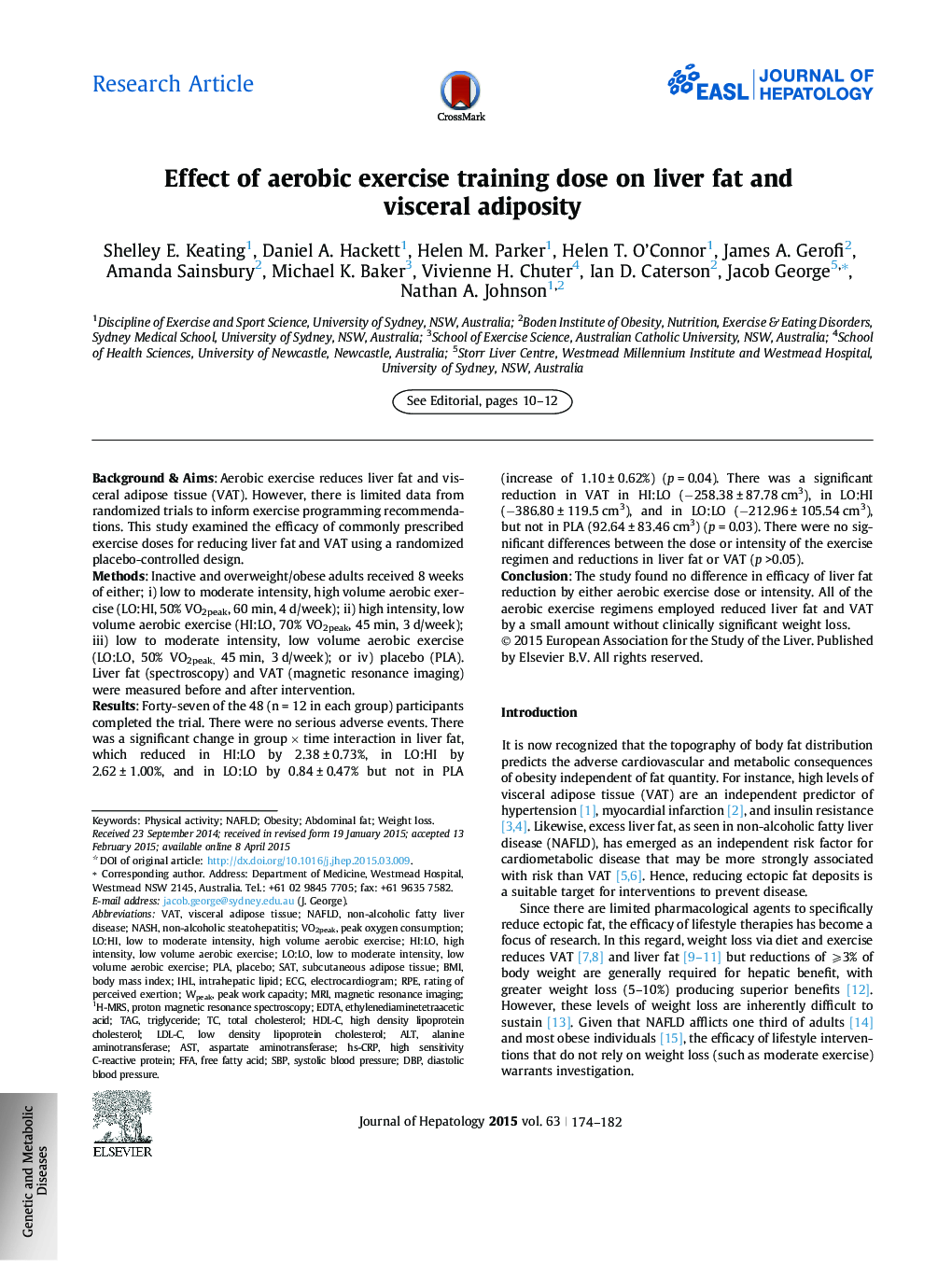| Article ID | Journal | Published Year | Pages | File Type |
|---|---|---|---|---|
| 6102505 | Journal of Hepatology | 2015 | 9 Pages |
Background & AimsAerobic exercise reduces liver fat and visceral adipose tissue (VAT). However, there is limited data from randomized trials to inform exercise programming recommendations. This study examined the efficacy of commonly prescribed exercise doses for reducing liver fat and VAT using a randomized placebo-controlled design.MethodsInactive and overweight/obese adults received 8 weeks of either; i) low to moderate intensity, high volume aerobic exercise (LO:HI, 50% VO2peak, 60 min, 4 d/week); ii) high intensity, low volume aerobic exercise (HI:LO, 70% VO2peak, 45 min, 3 d/week); iii) low to moderate intensity, low volume aerobic exercise (LO:LO, 50% VO2peak, 45 min, 3 d/week); or iv) placebo (PLA). Liver fat (spectroscopy) and VAT (magnetic resonance imaging) were measured before and after intervention.ResultsForty-seven of the 48 (n = 12 in each group) participants completed the trial. There were no serious adverse events. There was a significant change in group Ã time interaction in liver fat, which reduced in HI:LO by 2.38 ± 0.73%, in LO:HI by 2.62 ± 1.00%, and in LO:LO by 0.84 ± 0.47% but not in PLA (increase of 1.10 ± 0.62%) (p = 0.04). There was a significant reduction in VAT in HI:LO (â258.38 ± 87.78 cm3), in LO:HI (â386.80 ± 119.5 cm3), and in LO:LO (â212.96 ± 105.54 cm3), but not in PLA (92.64 ± 83.46 cm3) (p = 0.03). There were no significant differences between the dose or intensity of the exercise regimen and reductions in liver fat or VAT (p >0.05).ConclusionThe study found no difference in efficacy of liver fat reduction by either aerobic exercise dose or intensity. All of the aerobic exercise regimens employed reduced liver fat and VAT by a small amount without clinically significant weight loss.
